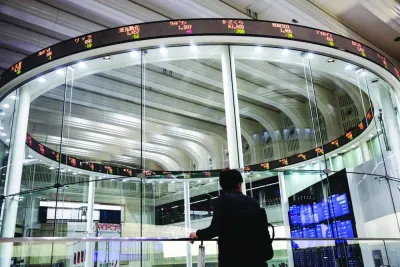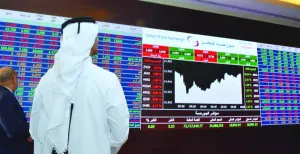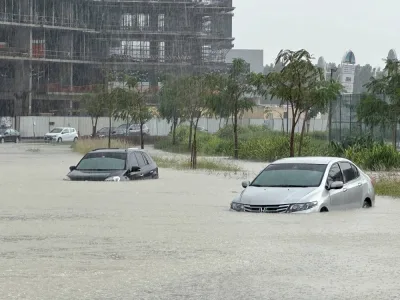Asian markets were mixed yesterday as Federal Reserve boss Jerome Powell’s indication that interest rates could stay higher for longer offset a rebound following the latest bout of Middle East-fuelled selling.While traders are nervously awaiting Israel’s next move after Iran’s missile and drone attack at the weekend, the lack of an immediate response has seen them focus on the US central bank’s monetary policy plans.In Tokyo, the Nikkei 225 closed down 1.3% to 37,961.80 points; Hong Kong — Hang Seng Index ended flat at 16,251.84 points and Shanghai — Composite closed up 2.1% to 3,071.38 points yesterday.A string of hotter-than-expected data on inflation and jobs in the first three months has forced investors to whittle down their bets on how many interest rate cuts the Fed will make this year.And Powell all but confirmed that borrowing costs will likely have to remain elevated longer than previously hoped.“The recent data have clearly not given us greater confidence and instead indicate that is likely to take longer than expected to achieve that confidence,” he warned on Tuesday in Washington.“Given the strength of the labour market and progress on inflation so far, it is appropriate to allow restrictive policy further time to work and let the data and the evolving outlook guide us.” The bank’s most recent “dot plot” guidance for rates suggested it will cut three times this year, with June eyed for the first.Traders had priced in as many as six cuts at the start of the year.But observers are now predicting just one or two at best — starting in July or September — with some even arguing that the next move could be a hike if inflation refuses to come back down to the Fed’s 2% target.Powell’s remarks chime with those of several officials at the Fed, who have urged caution on when to begin normalising rates.Richmond Fed chief Thomas Barkin said on Tuesday that the recent run of indicators had not supported the idea of a soft landing for the economy, while Fed Vice Chair Philip Jefferson saw inflation coming down but rates remaining elevated for now owing to price pressures.The S&P 500 and Nasdaq both fell in New York, though the Dow eked out a gain.Asia was mixed, with Tokyo, Sydney, Seoul, Jakarta and Bangkok down but Shanghai, Singapore, Wellington, Taipei and Manila rising. Hong Kong was flat.
Business
Qatar to host 5th full meeting of Standing International Forum of Commercial Courts
Wednesday, April 17, 2024
Tuesday, April 16, 2024
Tuesday, April 16, 2024
Tuesday, April 16, 2024
Sunday, April 14, 2024
Tuesday, April 09, 2024
Tuesday, April 09, 2024
Greatest decarbonisation in 2050 to stem from sustainable aviation fuel: Joint review
Wednesday, April 17, 2024
Upgrading security standards with Ooredoo’s new ‘CCTV as a Service’ for businesses
Tuesday, April 16, 2024


























